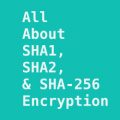Extend the benefits of SSL to multiple WordPress sites
‘HTTPS’ is an internet protocol just like HTTP. The world of the internet is moving from HTTP to HTTPS—the S stands secure. That means that a secured connection is established between an online user’s browser and the web server hosting the website. This secure connection is facilitated through an SSL certificate.
As the number of cyber-attacks rises through the roof, securing WordPress websites has become a prerequisite these days. Adding an SSL certificate to a WordPress multisite network is a straightforward way to fortify its security.
Let’s clear a few things before getting to the main part.
What is an SSL Certificate?
We all spend a big amount of our daily time online. Whether it be spending hours on social media or making an online purchase, we share plenty of our personal information throughout the day. This information needs to be secured so that hackers and fraudsters don’t get a hold of it. This is where SSL certificates enter the picture.
If you have an SSL certificate installed on your server(s), any tiny bit of information sent to and from your users is transformed into a format made up of alphabets, numbers and special characters. This string of character is impossible to decipher by supercomputers, let alone cyber criminals. This is called end-to-end encryption.
Why is it so important?
Customer trust is a make or breaks thing as far as online businesses are concerned. There is always an element of doubt in a customer’s mind before making any transaction or sharing any sensitive personal information. If you install an SSL certificate on a WordPress site (or any site for that matter), trust indicators such as a padlock and green address bar are activated on your website. These signs play a very decisive role as far as customer trust is concerned. Seeing such signs, there is a far lower chance of any user abandoning their cart, thereby increasing your order conversion rates.
Another benefit of having an SSL certificate installed comes in form of search engine rankings. As a part of its mission to make the internet safe, Google gives preference to HTTPS enabled websites. We don’t need to say how big of an advantage this could be, do we?
Let’s get the ball rolling
Disclaimer: We strongly encourage you to back up the data on your WordPress site before you begin.
Facilitating HTTPS on a WordPress multisite network is a fairly straightforward process which shouldn’t take much time. This will add a secure layer of communication over the entire network.
Let’s have a look at the steps involved.
- First, open the Network Admin dashboard and click on settings
- Go to the domain mapping option
- Now, scroll down and find Force http/https
- Click Yes for ‘Would you like to force https in admin and login pages’
- Now you will be asked ‘Would you like to force http/https in front-end pages’, select the Force https option
After completing the aforementioned steps, your main site should now be shielded using an SSL certificate. Now it’s time to encrypt your users’ websites. Let’s do that!
- Scroll down the page until the Enable excluded/forced URLs section comes up.
- Now, you can give permission to your users (referred here as site admins) to exclude desired pages from mapping and to grant the use of your SSL certificate on their websites
Are all done? Excellent job. Now your users don’t need to buy separate SSL certificates. All they need to do is go to admin dashboard > Tools > Domain Mapping and add domain names they want to secure.
Buy Cheap SSL Certificates for WordPress Websites

Secure WordPress website using the best SSL certificates at low prices from trusted SSL Brands.












